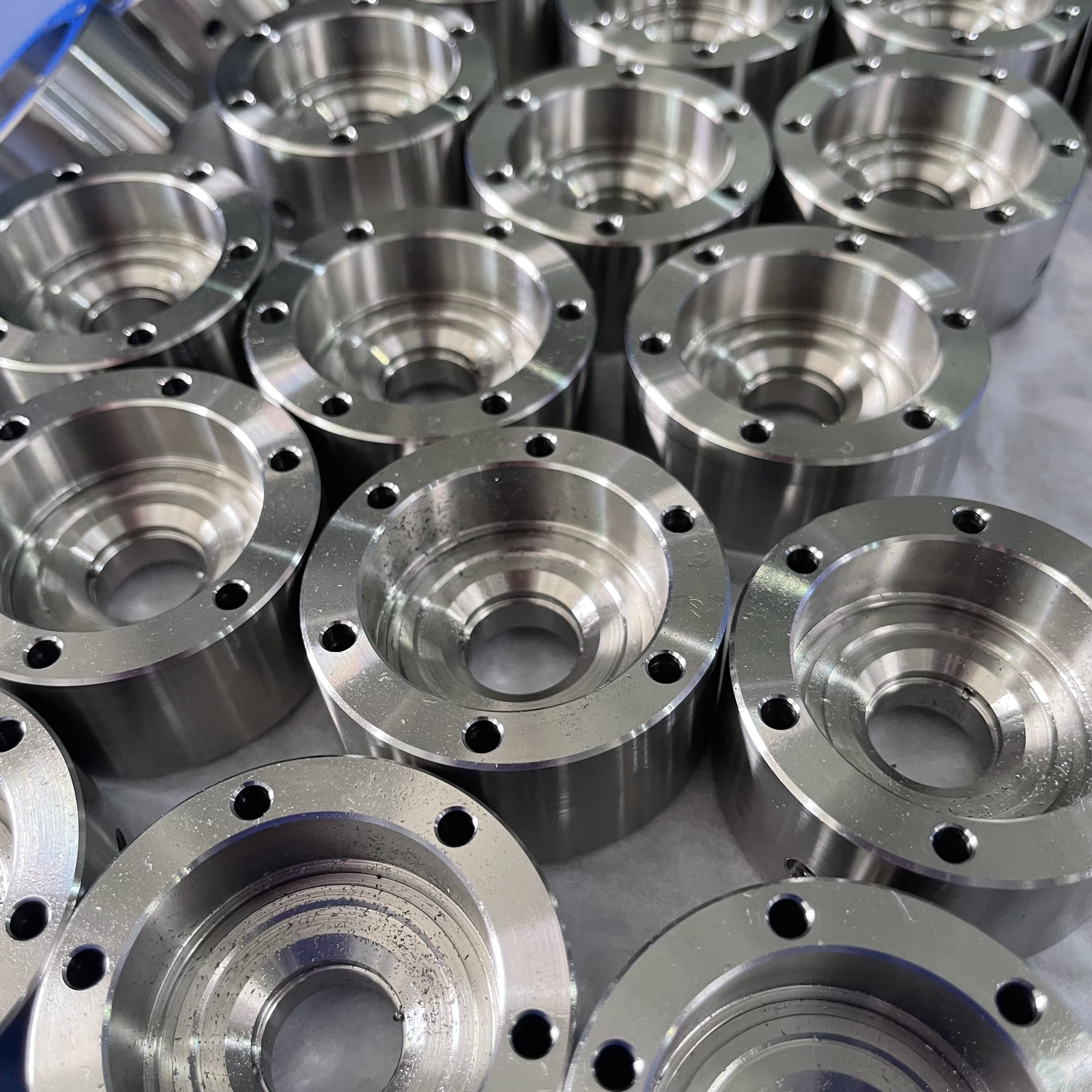The Importance of CNC Cutting Accuracy: Exploring Precision Engineering

Exploring Precision Engineering
Precision engineering plays a vital role in the manufacturing industry, and CNC cutting accuracy is at the heart of it. The ability to achieve precise cuts and shapes in various materials is essential for creating high-quality products. CNC precision cutting ensures that components fit together perfectly, leading to improved product performance and reliability. Understanding the significance of CNC cutting accuracy in precision manufacturing is crucial for achieving excellence in product quality and consistency.
Fact: Precision engineering involves designing and producing intricate components with extremely tight tolerances to ensure optimal functionality.
Now, let's move on to exploring the factors that influence CNC cutting accuracy.
Factors Influencing CNC Cutting Accuracy
Material Properties Impact
The properties of the materials being cut have a significant impact on CNC cutting accuracy in precision manufacturing. Different materials possess varying hardness, elasticity, and other characteristics that directly influence the precision of the cutting process. For instance, metals may require different cutting parameters compared to plastics or composites due to their distinct properties. Understanding these material characteristics is crucial for achieving accurate cuts and shapes, as it allows for the adjustment of CNC cutting parameters to accommodate specific material properties.
Role of Software and Programming
Software and programming play a pivotal role in ensuring CNC cutting accuracy in precision manufacturing. The use of advanced software enables engineers to create intricate cutting paths and define precise tool movements, resulting in accurate component production. Additionally, programming allows for the optimization of cutting parameters based on material properties, ensuring that the CNC machine operates with precision. The integration of software and programming not only enhances CNC cutting accuracy but also contributes to the overall efficiency and reliability of the manufacturing process.
Advantages and Limitations of Precision Engineering
Benefits of Precision Engineering
Precision engineering offers a multitude of benefits in the realm of manufacturing technology. One significant advantage is the ability to produce complex and intricate components with unparalleled accuracy and consistency. This precision enhances the overall quality of products, leading to improved performance and durability. Additionally, precision engineering enables manufacturers to achieve higher levels of efficiency by minimizing material wastage and reducing the need for rework, ultimately resulting in cost savings.
Furthermore, the precise nature of engineering precision allows for the creation of innovative designs that push the boundaries of what is achievable in product development. This fosters a culture of continuous improvement and advancement within the manufacturing industry, driving technological progress and enhancing competitiveness in the global market.
Challenges in Precision Engineering
Despite its numerous advantages, precision engineering also presents certain limitations and challenges. One such challenge is the requirement for highly specialized skills and expertise to operate advanced precision machinery effectively. The complexity involved in achieving high levels of accuracy demands a skilled workforce capable of understanding intricate design specifications and operating sophisticated equipment with precision.
Moreover, factors such as environmental conditions, material variations, and tool wear can impact precision engineering accuracy. These variables necessitate thorough monitoring and control measures to ensure consistent performance and maintain high levels of accuracy across production cycles.
Future Prospects for Enhancing CNC Cutting Accuracy
Technological Advancements
Technological advancements continue to play a pivotal role in enhancing CNC cutting accuracy within precision manufacturing. The integration of advanced sensors and real-time monitoring systems allows for precise measurements and adjustments during the cutting process. This level of automation not only ensures consistent accuracy but also reduces the margin of error, leading to higher quality components.
Furthermore, the evolution of machine learning and artificial intelligence (AI) has revolutionized CNC cutting accuracy. AI algorithms analyze vast amounts of data to optimize cutting parameters based on material properties, resulting in improved precision and efficiency. Additionally, the incorporation of robotics in CNC machining processes further enhances accuracy by enabling intricate movements with minimal human intervention.
Looking ahead, future trends in precision engineering technology indicate a shift towards seamless integration between design software and CNC machines. This integration aims to streamline the transfer of design specifications directly to the manufacturing equipment, eliminating potential errors or discrepancies in interpreting complex geometries.
Innovations in Calibration and Maintenance
Innovative approaches to calibration and maintenance are poised to significantly improve CNC cutting accuracy in precision engineering. Advanced calibration techniques leverage high-precision measurement tools and automated processes to ensure that CNC machines operate within specified tolerances. Regular maintenance schedules, coupled with predictive analytics, allow for proactive identification of potential issues that could affect cutting accuracy.
Moreover, the development of self-calibrating systems promises enhanced reliability by continuously adjusting machine parameters based on real-time feedback. These innovations not only contribute to maintaining precision engineering standards but also minimize downtime associated with manual calibration processes.
The ongoing focus on innovations in calibration and maintenance is expected to elevate CNC cutting accuracy to unprecedented levels, setting new benchmarks for excellence in precision manufacturing technology.
Ensuring CNC Cutting Accuracy
Best Practices for Accuracy
In precision manufacturing, ensuring CNC cutting accuracy is essential for maintaining the quality and consistency of the end products. Here are some best practices to uphold accuracy in CNC cutting processes:
Regular Maintenance: Implementing a routine maintenance schedule for CNC machines is crucial for preserving their precision. This includes inspecting and calibrating the equipment, as well as replacing any worn components to ensure optimal performance.
Tooling Optimization: Utilizing the appropriate cutting tools and toolpath strategies can significantly impact cutting accuracy. Selecting the right tools based on material properties and regularly optimizing toolpaths enhances precision in CNC cutting processes.
Quality Control Measures: Incorporating stringent quality control measures throughout the manufacturing process helps identify any deviations from the desired specifications. This involves thorough inspection of machined components to verify their dimensional accuracy.
Quality control is not just about finding defects; it's about preventing them.
Impact of Calibration
Calibration plays a critical role in contributing to CNC cutting accuracy within precision engineering. Precise calibration ensures that CNC machines operate within specified tolerances, aligning with the intended design parameters. It directly influences the dimensional accuracy and surface finish of machined components, ultimately impacting the overall product quality in precision manufacturing.
Effective calibration procedures involve meticulous adjustments to machine settings, tool offsets, and positional accuracies to eliminate errors and deviations during the cutting process. The significance of precise calibration cannot be overstated, as it forms the foundation for achieving consistent and reliable CNC cutting accuracy.
The Vital Role of CNC Cutting Accuracy
Precision engineering hinges on the pivotal role of CNC cutting accuracy in ensuring the quality and consistency of manufactured products. The precision achieved through CNC cutting directly impacts the functionality and reliability of components, making it an indispensable aspect of precision manufacturing.
In essence, CNC cutting accuracy forms the foundation for excellence in precision engineering, driving the production of high-quality, intricate components with unparalleled precision.
To maintain this critical aspect of precision manufacturing, it is imperative to prioritize regular maintenance, tooling optimization, and stringent quality control measures. These practices contribute to upholding the highest standards of CNC cutting accuracy, thereby reinforcing the overall quality and reliability of manufactured products.
See Also
Discovering CNC Milling: A Thorough Look at Precision Engineering
The Outlook for CNC Milling: Progress and Flexible Uses
Revealing the Accuracy of CNC Machining in Aerospace Sector
Investigating the Benefits of Aluminum CNC Machining Solutions
The Influence of Small Components CNC on Personalized R/C Hobby Items
About US
Follow Us
Your prototype holds unparalleled significance, and we deeply value its uniqueness. Collaborating with you during the preparation phase for running your prototype or parts is a commitment we gladly embrace. Whether it's a single part or a complex assembly, we are dedicated to selecting the optimal tools and pathways to bring your envisioned product to life.
At Precision Fab CNC Machining, we specialize in producing parts for prototypes, short runs, and high-volume production. Our prototyping machine capabilities extend across metal, plastic, and wood machining, with welding fabrication services available to complement and finalize your prototype if required.
Address
Address: Room320 10F, Building A,Nanshan international building, Dayawan District, Huizhou, Guangdong, 516001 China
Contacts
billy@timaycnc.com

